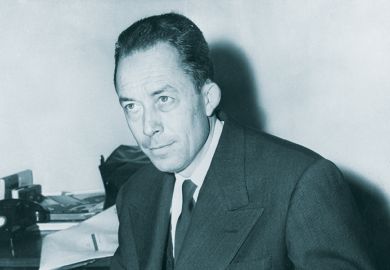Isak Dinesen (the English pen name of the Danish writer Karen Blixen) is said to have admitted that she sold her soul to the devil in exchange for the gift of storytelling, and that the price she paid was syphilis — which she contracted from her husband. The gift enabled her to reinvent both herself and her passionate but unhappy love affair with Denys Finch Hatton in Out of Africa , a fine book that occupies a territory somewhere between truth and fiction. It was a love story best served by Finch Hatton’s sudden and premature death in 1931. Probably the world would not have remembered Dinesen’s fabled lover but for her heart-breaking book.
Sara Wheeler is already the author of four books, including the acclaimed biography Cherry: A Life of Apsley Cherry-Garrard . In Too Close to the Sun , she is determined to eke out what is known of Finch Hatton’s life in order to get close to the truth about him. There is now no one alive who remembers him, and he left no diaries and only a few short letters. Wheeler’s book provides not only insight into his character but also tells one of the last untold stories of the First World War — the East African campaign. She follows Finch Hatton faithfully on his journey of self-realisation until he finally finds a kind of purpose, though sadly it is too late. No one who has ever tasted Africa will fail to be affected by Wheeler’s writing.
So who was this tall, balding, restless aristocrat who became the elusive hero of Dinesen’s poetic memoir? After a gilded career at Eton and Oxford University, Finch Hatton sailed in 1910 for East Africa, which was still very much the land of the pioneer. His father was the 13th Earl of Winchilsea and the eighth Earl of Nottingham, and he "witnessed at first hand the marginalisation of his class when agricultural interests were overtaken by economic modernisation". In Kenya, he found a new world where the colonial overspill gave him both freedom and danger — powerful magnets for this irresolute adventurer. Within a few years, he was involved in the horrors of an almost unknown war fought with bayonets and 19th-century weaponry over vast expanses of unmapped bush. Somehow, Finch Hatton became a key figure in the British settlement of East Africa.
Although Wheeler delves into the truth behind Finch Hatton’s love affairs with Blixen as she struggled for survival on her doomed coffee farm in the Ngong Hills, and with the pioneering aviatrix Beryl Markham, author of West with the Night , it is the commentary on the British colonial era and the descriptions of wilderness life in East Africa that bring Too Close to the Sun to life. Here was a vast and sultry land, newly opened only for the white man’s benefit. Although white man’s medicine was still widely revered, most Africans correctly judged their new "rulers" suspiciously.
Finch Hatton met Karen Blixen, known as Tania, at a dinner at the Muthaiga Club in Nairobi in 1918. She was 33, two years older than him. Elspeth Huxley described her as a person "full of magnetism and restless energy, like a benign witch". She was married to the Danish Baron Bror Blixen-Finecke, but she never hid the fact that she was not in love with him. Although a respected hunter, he was a womaniser and hopelessly irresponsible with money. Early in the marriage, he infected Tania with syphilis (the disease had become endemic among the Masai, and it was generally known that he was sleeping with Masai women).
The following year, 1919, when Finch Hatton had a fever, he stayed at the Blixen farm, and shortly afterwards he invited Tania alone on safari. Bror Blixen-Finecke soon started introducing Finch Hatton as "my good friend and wife’s lover". Together they shared the lyrical landscape, the people, the tropical nights, literature and music. But his urge for freedom and her possessiveness would eventually destroy their harmony. After Denys discovered his vocation and began working in the bush with visiting sportsmen as a "white hunter", a despairing Tania realised she was living only for her lover’s visits. Her violent mood swings ricocheted from suicidal despair to high elation.
By 1929, an anguished Finch Hatton realised that he could no longer tolerate her jealousy and emotional demands. He was now one of Kenya’s most efficient safari leaders, and he had taken the Prince of Wales on two separate safaris. He also determined to buy his own plane (a custard-yellow Gypsy Moth), and was one of the first to realise that photography, including aerial photography, of wild animals in their natural surroundings was a far more sensible activity than the massacre of game, especially when the latter took place from cars.
Wheeler speculates that his fellow aviator Markham was pregnant by Finch Hatton at the time she refused to fly with him in his Gypsy Moth on that fateful day in 1931. But only the day before, he is known to have left Tania on the Blixen farm, saying he would be back the following Thursday. Two others also refused to fly with him, causing Dinesen to write of "the shadow of destiny, which Denys himself had felt in the last days at Ngong".
Wheeler gives a sensitive telling of a tragic love story set against the magical background of early British Africa. By doing so, she also silently corrects the grossly inaccurate portrait of Finch Hatton, as portrayed by Robert Redford in the Oscar-winning film Out of Africa .
Christopher Ondaatje is a trustee of the National Portrait Gallery and the author of Hemingway in Africa and Woolf in Ceylon .
Too Close to the Sun: The Life and Times of Denys Finch Hatton
Author - Sara Wheeler
Publisher - Cape
Pages - 284
Price - £18.99
ISBN - 0 224 06380 4
Register to continue
Why register?
- Registration is free and only takes a moment
- Once registered, you can read 3 articles a month
- Sign up for our newsletter
Subscribe
Or subscribe for unlimited access to:
- Unlimited access to news, views, insights & reviews
- Digital editions
- Digital access to THE’s university and college rankings analysis
Already registered or a current subscriber? Login



